Reference Information
CAS Number
A Chemical Abstract Service Registry Number (CAS Number) is assigned to a single chemical by the Chemical Abstract Service in the United States. The CAS number serves as a unique identifier of the chemical. Some mixtures are also assigned a CAS Number.
Chemical name
The chemical name may be a systematic name, the common name or a generic name. Typically the name in this field is the same name used by the agency who undertook the classification.
Synonyms
Often a chemical has multiple names, these other names are referred to as ‘synonyms’. The listing of synonyms for a substance is not necessarily exhaustive.
GHS Hazard Category
The GHS hazard categories represent the known hazards of the chemical. The assessment of chemical hazards is carried out by expert authorities in accordance with the Globally Harmonized System of Classification and Labelling (GHS), which includes defined criteria for each hazard.
Many chemicals have not been assessed for all hazard categories. The classification information may not be comprehensive and is subject to change.
For more information on chemical classification please see the Classifying Workplace Hazardous Chemicals webpages.
Pictograms
Pictograms are symbols used to quickly identify a chemical’s hazards. There are nine pictograms in the GHS.
Under Australian Work Health and Safety laws, pictograms are required on the labels of hazardous chemicals used in the workplace.
|
GHS01 – Exploding bomb Explosion, blast or projection hazard. |
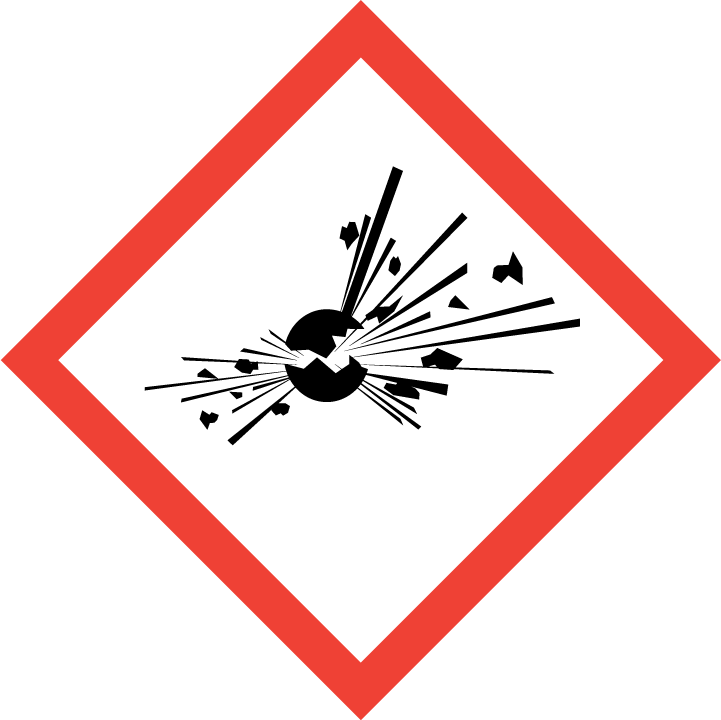
|
|
GHS02 – Flame Flammable liquids, solids and gases; including self-heating and self-igniting substances. |
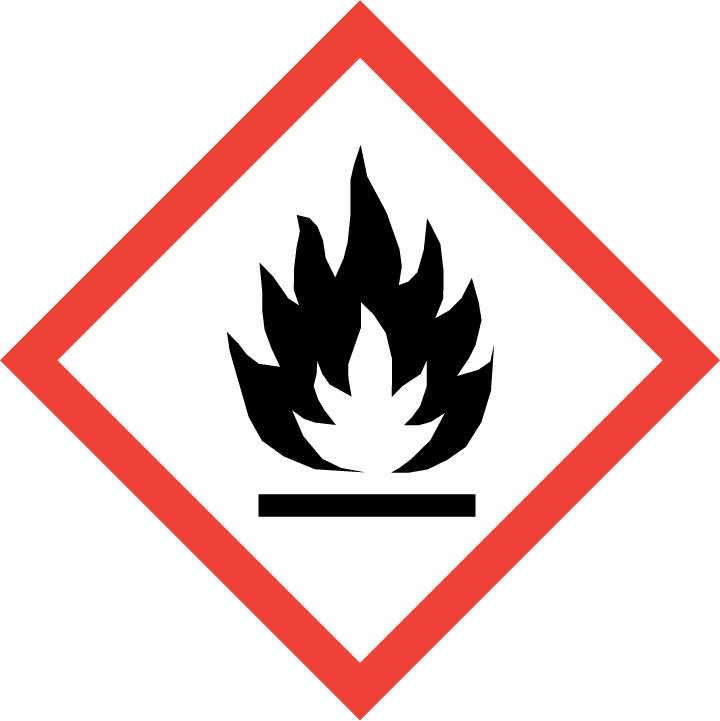
|
|
GHS03 – Flame over circle Oxidising liquids, solids and gases, may cause or intensify fire. |

|
|
GHS04 – Gas cylinder Gases under pressure. |
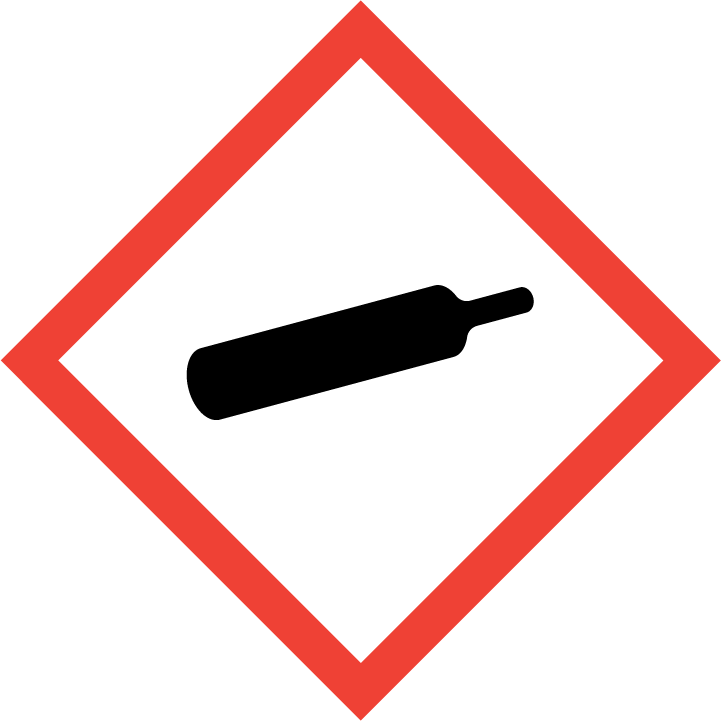
|
|
GHS05 – Corrosion Corrosive chemicals, may cause severe skin and eye damage and may be corrosive to metals. |
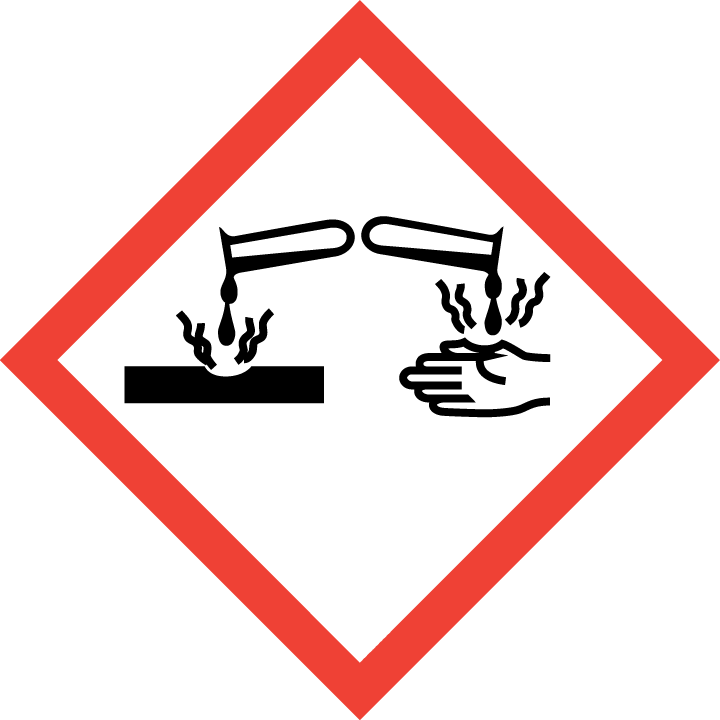
|
|
GHS06 – Skull and crossbones Fatal or toxic if swallowed, inhaled or in contact with skin. |

|
|
GHS07 – Exclamation mark Low level toxicity. This includes respiratory, skin, and eye irritation, skin sensitisers and chemicals harmful if swallowed, inhaled or in contact with skin. |
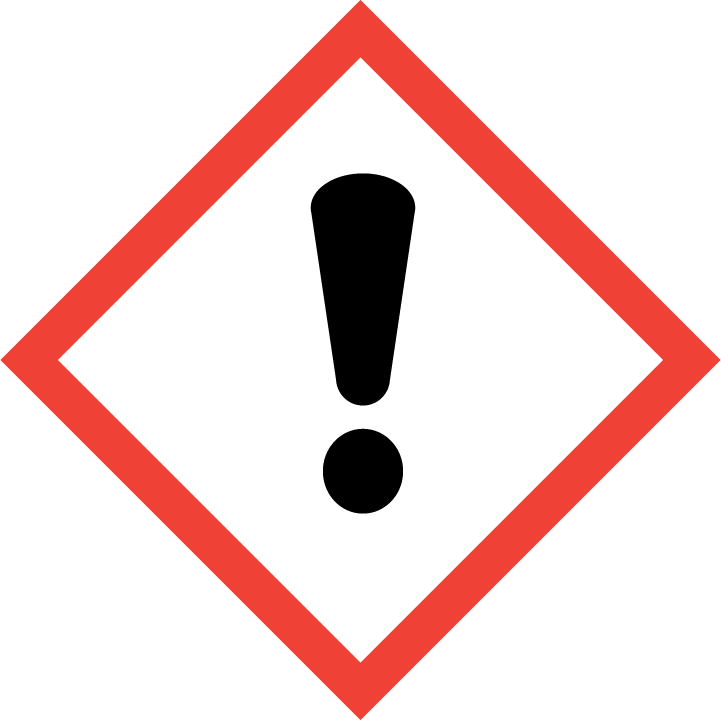
|
|
GHS08 – Health Hazard Chronic health hazards; this includes aspiratory and respiratory hazards, carcinogenicity, mutagenicity and reproductive toxicity. |
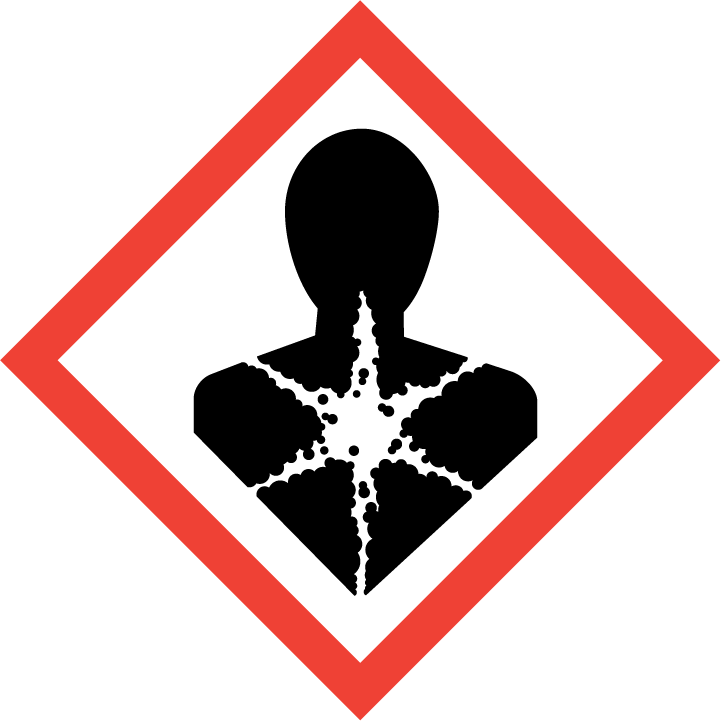
|
|
GHS09 – Environment Hazardous to aquatic life and the environment. |
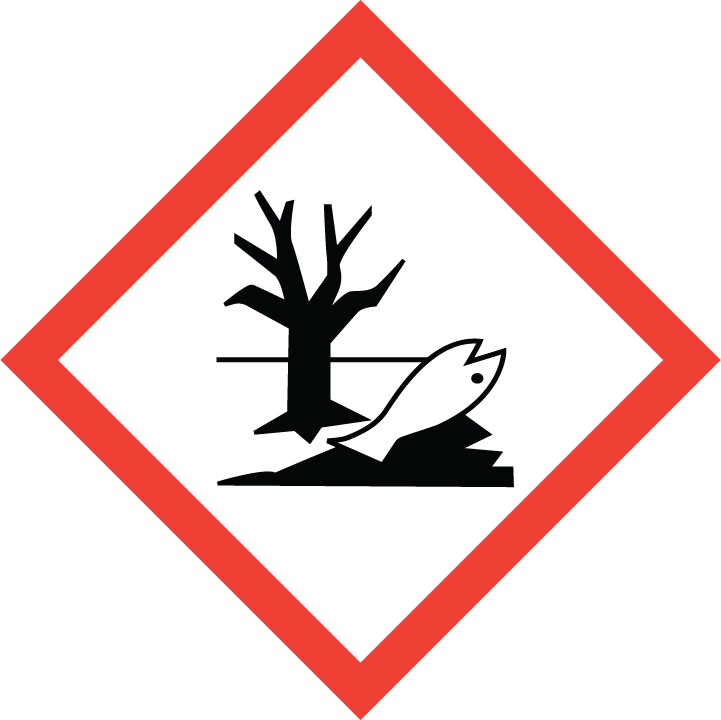
|
Signal Words
The GHS uses ‘Danger’ and ‘Warning’ as signal words to indicate the relative level of severity of a hazard. ‘Danger’ is used for the more severe or a significant hazard, while ‘Warning’ is used for the less severe hazards.
Hazard Statements
A hazard statement is a description of a chemical hazard assigned to a particular hazard category. As well as providing a brief description of the hazard, the hazard statement may contain information such as relevant routes of exposure, specific organs that may be damaged and the severity of the hazard.
A full list of hazard statements can be found in Annex 3 to the GHS. Safe Work Australia also publishes a classification and labelling poster which includes hazard statements and other labelling elements for those hazard categories adopted in the model Work Health and Safety Regulations.
Hazard Statement Code
The GHS assigns each hazard statement a hazard statement code. These codes provide an easy way to communicate hazard statements when the full statement text is not required.
A full list of hazard statement codes can be found in Annex 3 to the GHS. Safe Work Australia also publishes a classification and labelling poster which includes hazard statement codes and other labelling elements for those hazard categories adopted in the model Work Health and Safety Regulations.
Cut Off Concentrations
Cut off concentrations are used to estimate the hazards of chemical mixtures. They set out the concentration to which an ingredient needs to be diluted before it is considered non-hazardous or becomes part of a lower hazard category. They are easy to use but should not be relied on for complex mixtures or where other data is available.
There are two types of concentration cut offs, generic cut offs and specific cut offs.
Generic cut offs are found in the GHS and the model WHS Regulations. These cut offs are not specific to any particular chemical and can be applied to any ingredient that has the relevant hazard. Generic cut offs should not be used where specific cut offs or test data exist.
Specific cut offs are based on test data. They are specific to certain chemicals and are more accurate than generic cut offs. Specific cut offs will be listed in the ‘Cut Offs’ section of a chemicals' entry. For chemicals that have specific cut offs, they should be used instead of generic cut offs to classify mixtures containing those chemicals.
Sometimes chemicals may have specific cut offs for specific hazard categories only. Consideration should still be given to generic cut offs for hazard categories that do not have a specific cut off.
The generic GHS cut off concentrations adopted in Australia are listed in the table below. The concentration limits apply to solids (w/w units), liquids (w/w units) and gases (v/v units). This table is intended for use with simple dilutions. For more information, please refer to the Classifying hazardous chemical – National guide. For more complex mixtures please refer to the GHS 7.
| Classification of Ingredient | Classification of Dilution | |
|---|---|---|
| Class | Category | Concentration of Hazardous Chemical |
| Acute toxicity | All categories | See section 3.1.3 of the GHS 7th edition |
| Skin corrosion / irritation | Category 1 |
Concentration ≥ 5%: skin corrosion category 1; eye damage category 1 3% ≤ concentration < 5%: skin irritation category 2; eye damage category 1 1% ≤ concentration < 3%: skin irritation category 2; eye irritation category 2A |
| Category 2 | Concentration ≥ 10%: category 2 | |
| Serious eye irritation | Category 1 |
Concentration ≥ 3%: category 1 1% ≤ concentration < 3%: category 2 |
| Category 2 | Concentration ≥ 10%: category 2 | |
| Sensitisation of the respiratory tract or the skin* | Respiratory sensitiser category 1 | Concentration ≥ 1%: category 1, (≥ 0.2% for gas mixtures) |
| Respiratory sensitiser sub-category 1A | Concentration ≥ 0·1%: sub-category 1A | |
| Respiratory sensitiser sub-category 1B | Concentration ≥ 1%: sub-category 1B (≥ 0.2% for gas mixtures) | |
| Skin sensitiser category 1 | Concentration ≥ 1%: category 1 | |
| Skin sensitiser sub-category 1A | Concentration ≥ 0·1%: sub-category 1A | |
| Skin sensitiser sub-category 1B | Concentration ≥ 1%: sub-category 1B | |
| Germ cell mutagenicity | Category 1 | Concentration ≥ 0·1%: category 1 |
| Category 2 | Concentration ≥ 1%: category 2 | |
| Carcinogenicity* | Category 1 | Concentration ≥ 0·1%: category 1 |
| Category 2 | Concentration ≥ 1%: category 2 | |
| Reproductive toxicity* | Category 1 | Concentration ≥ 0·3%: category 1 |
| Category 2 | Concentration ≥ 3%: category 2 | |
| Additional category for effects on or via lactation | Concentration ≥ 0·3%: effects on or via lactation | |
| Specific target organ toxicity (single exposure) | Category 1* |
Concentration ≥ 10%: category 1 1% ≤ concentration < 10%: category 2 |
| Category 2* | Concentration ≥ 10%: category 2 | |
| Category 3 | Concentration ≥ 20%: category 3 (see GHS 3.8.3.4.5) | |
| Specific target organ toxicity (repeated exposure)* | Category 1 |
Concentration ≥ 10%: category 1 1% ≤ concentration < 10%: category 2 |
| Category 2 | Concentration ≥ 10%: category 2 | |
| Aspiration hazard | Category 1 | ≥10%, and kinematic viscosity ≤20.5mm2/s (see GHS 3.10.3.3): category 1 |
* Cut off concentrations for these classes and categories are taken from the model Work Health and Safety regulations. All other cut offs are taken from the GHS 7th edition.
M factors
M factors are multiplying factors used to calculate the overall toxicity of a mixture that contains highly toxic chemicals with known aquatic toxicity effects. Even at low concentrations, these highly toxic chemicals can increase the overall toxicity of a chemical mixture. M factors are associated with chemicals that have either an acute aquatic toxicity category 1 or chronic aquatic toxicity category 1 classification. M factors can be found in the ‘Cut Offs’ section of a chemical’s entry and are labelled accordingly to show which aquatic toxicity hazard category they apply to.
Environmental hazard classifications (i.e. acute aquatic toxicity, chronic aquatic toxicity, hazardous to the ozone layer) are not relevant to determining whether a chemical meets the definition of a ‘hazardous chemical’ under the model WHS laws. However, environmental hazard classifications and M factors are still provided on HCIS where applicable. For more information on how M factors can be used for classifying mixtures that have an environmental hazard classification, please refer to the GHS 7.
Notes
The note field provides additional information about the chemical or hazard classification. Notes are usually provided by the agency that prepared the classification; they may include information such as specific labelling considerations for the chemical or common impurities that should be considered when making the hazard classification.
Source
The source field contains the names of the organisations that contributed to the classification or exposure standard. Sometimes more than one name may be listed, this happens when more than one organisation contributes to the classification (such as when one organisation undertakes a health hazard assessment, and another undertakes a physical or environmental hazard assessment).
Exposure Standard Name
The exposure standard name may be a systematic name, the common name or a generic name. Typically the name in this field is that used by the agency that developed the exposure standard.
The following notations may also be included in the exposure standard name.
| Notation | Meaning |
|---|---|
| (a) | This value is for inspirable dust containing no asbestos and < 1% crystalline silica. |
| (b) | Fibres longer than 5 µm, width less than 3 µm and with an aspect ratio of not less than 3:1, as measured by the membrane filter method, at 400-650X magnification phase contrast illumination. |
| (c) | Lint free dust as measured by the vertical elutriator õ cotton dust sampler described in the Transactions of the National Conference on Cotton Dust and Health 1970, North Carolina University Press, Chapel Hill, pp. 33-43, 1971. |
| (d) | For a few substances, usually the more potent probable and established human carcinogens, it is not currently possible to assign an appropriate exposure standard. For these substances, exposure should be controlled to the lowest practicable level. |
| (e) | The Exposure Standards Expert Working Group has recommended guidelines to control short-term excursions above the TWA. The guidelines have been developed based on the toxicokinetic properties of carbon monoxide. A guidance table for the control of short-term excursions above the TWA is available in table 9 of the documentation for carbon monoxide. |
| (f) | For the three substances marked with this footnote (Benomyl, Caprolactam vapour, and Sodium azide), the exposure standards are established as gravimetric (mg/m3) values and converted into volumetric values. |
| (g) | Containing no asbestos and < 1% crystalline silica. |
| (h) | Documentation for the substances with this notation can be found in the 5th or 6th edition of the ACGIH documentation of the threshold limit values and biological exposure indices. |
Time Weighted Average (TWA)
Time weighted average exposure standard (TWA) means the average airborne concentration of a substance over an eight-hour working day, for a five-day working week. A person conducting a business or undertaking must ensure that a worker is not exposed to airborne contaminants above the workplace exposure standard.
The TWA columns may also contain the peak limitation. Peak limitation means a maximum or peak airborne concentration of a substance determined over the shortest analytically practicable period of time.
The TWA and peak limitation may be measured in either parts of contaminant per million parts of air (PPM) or milligrams of contaminant per cubic meters or air (mg/m3).
For more information refer to Guidance on the Interpretation of Workplace Exposure Standards for Airborne Contaminants
Short Term Exposure Limit (STEL)
Short term exposure limit (STEL) means the average airborne concentration of a substance calculated over a 15 minute period. The STEL should not be exceeded at any time during a normal eight hour working day.
The STEL may be measured in either parts of contaminant per million parts of air (PPM) or milligrams of contaminant per cubic meters or air (mg/m3).
For more information refer to Guidance on the Interpretation of Workplace Exposure Standards for Airborne Contaminants.
Documentation
Some exposure standards have supporting documentation that provides background information, recommendations for control measures and further reading.
